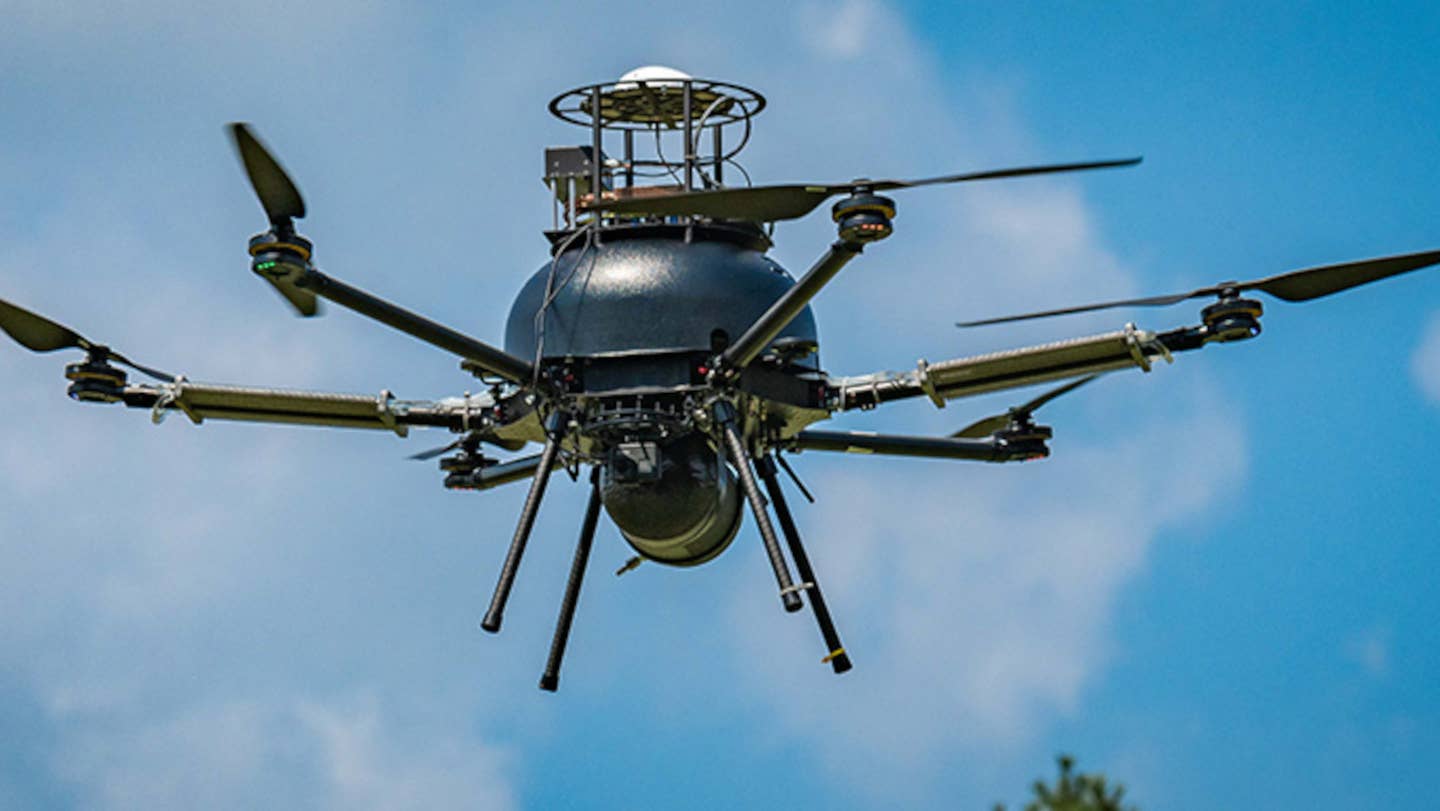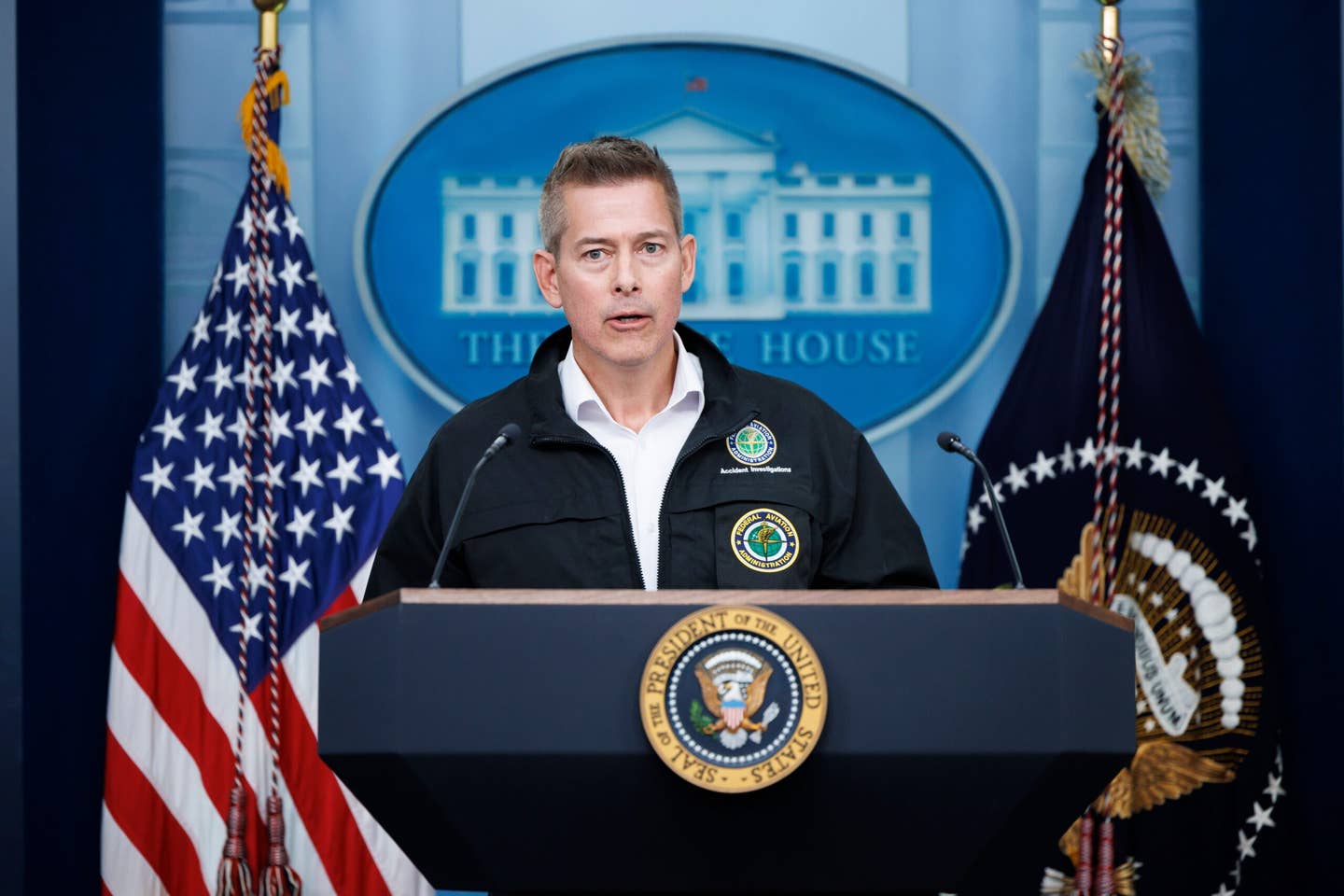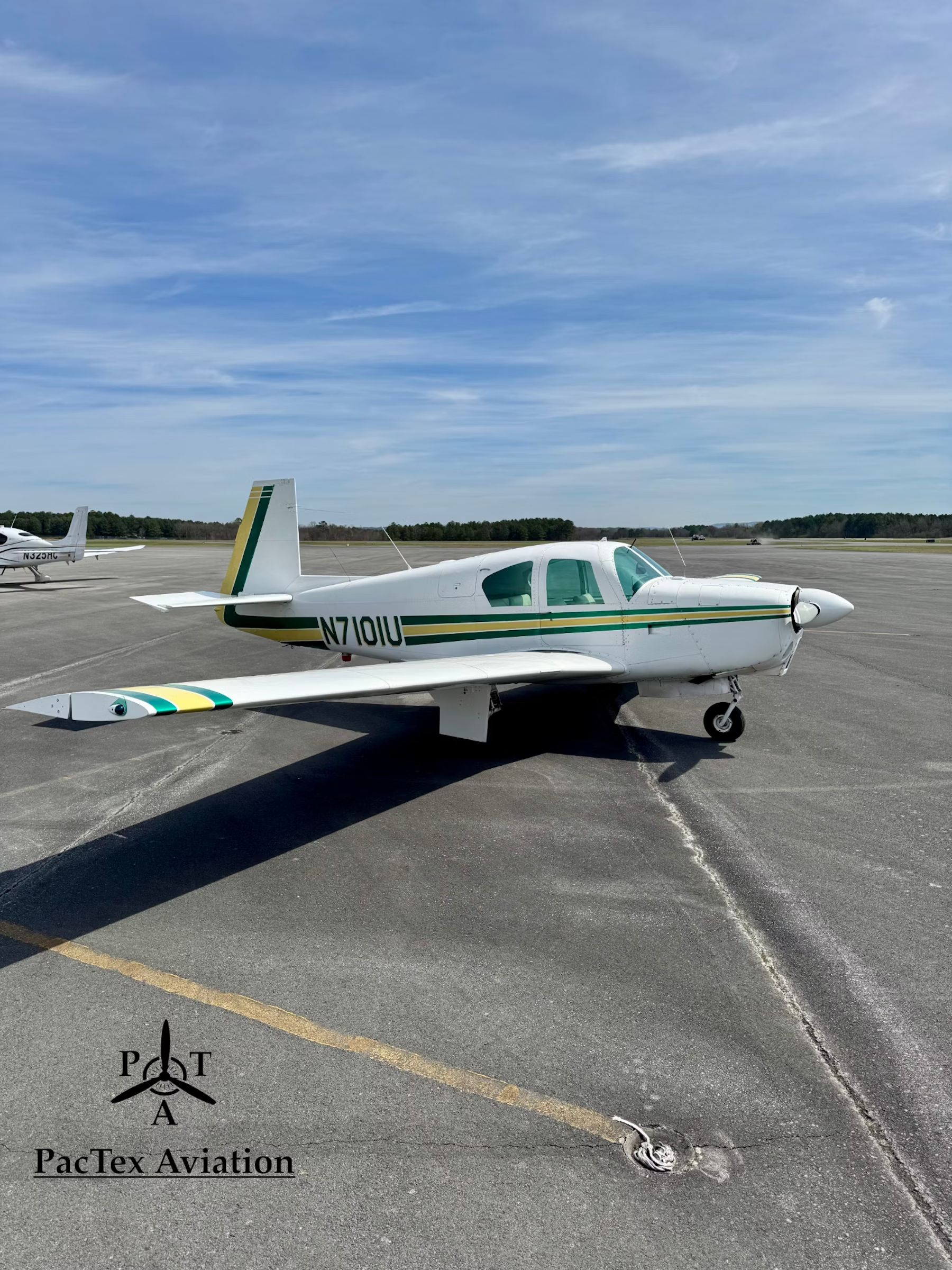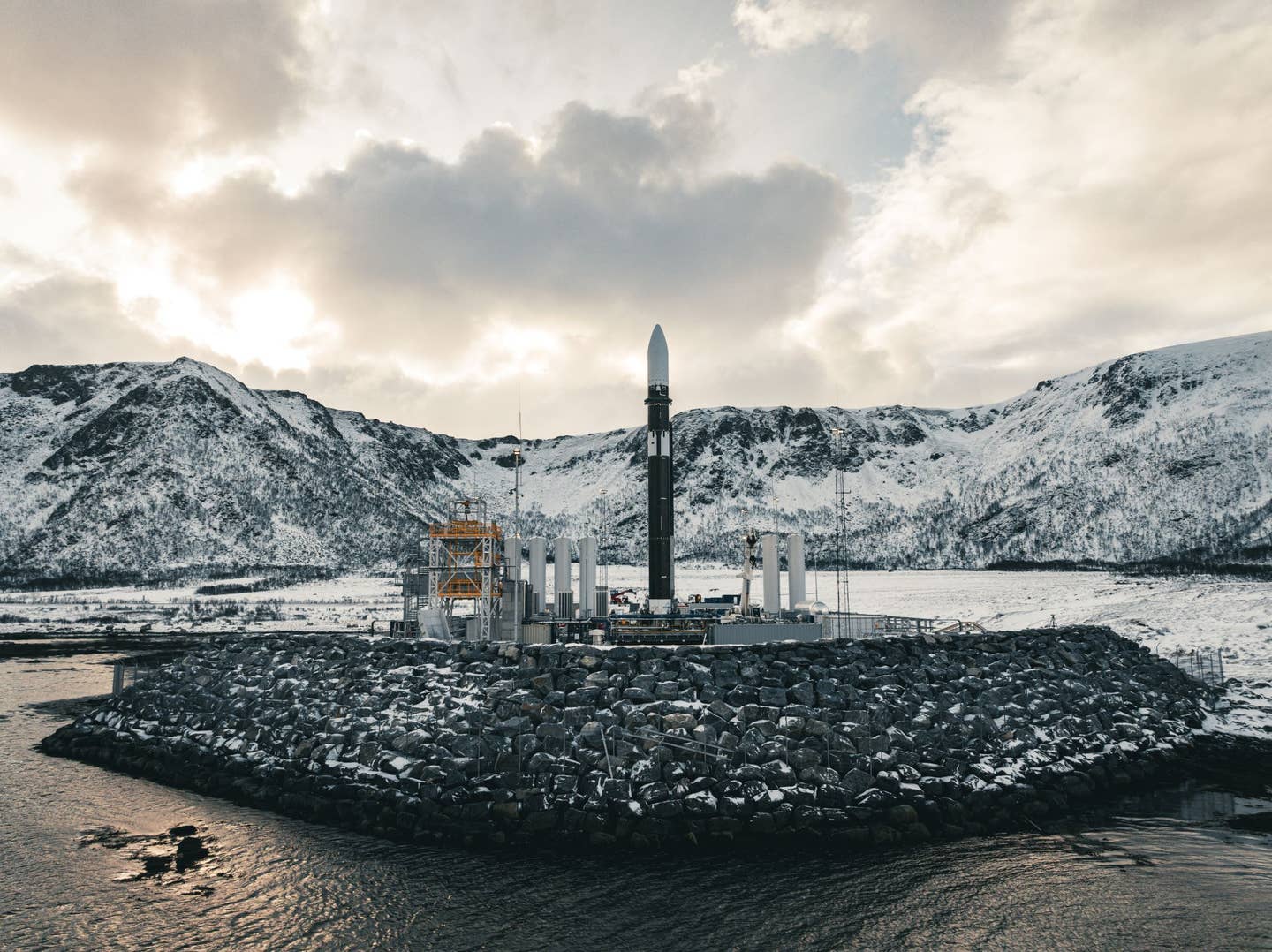Honeywell, DOE Developing Hydrogen Fuel Storage for Long-Range Drones
The defense titan and the Department of Energy have entered a yearlong collaboration to prototype a new system that converts solid hydrogen to electricity.

A Honeywell Aerospace electric drone takes flight. [Courtesy: Honeywell Aerospace]
The Flash doesn’t get his superspeed from hydrogen fuel, but the U.S. Department of Energy’s FLASH project promises to explore new avenues for the emerging fuel source.
FLASH—which stands for Fuel Additives for Solid Hydrogen Carriers in Electric Aviation—is the DOE’s latest hydrogen-related initiative. The project will see the department’s National Renewable Energy Laboratory (NREL) and aerospace and defense titan Honeywell collaborate on a prototype hydrogen fuel storage system for long-range drones.
But while most hydrogen fuel is stored as a gas or liquid, the partners are eyeing a mechanism to store solid hydrogen. The material could be quickly burned off to produce the element’s gaseous form, allowing uncrewed aerial vehicle (UAV) fuel cells to convert it to electric power.
The yearlong collaboration is expected to result in the development of a hydrogen fuel cartridge, which Honeywell could deploy on its application platforms. The company develops other solid-state cartridge systems for UAVs, but it’ll look to boost their performance through low-temperature, fast-release technology from FLASH.
Honeywell will provide technological expertise, fuel cartridge testing, supply chain support, and fuel cell prototyping and evaluation for the project. NREL in FLASH’s first phase “will provide technical expertise on FLASH formulations, fabrication, and characterization of the hydrogen fuel storage.”
The project’s ultimate goal is to mature new hydrogen carrier tech within the DOE Energy Materials Network’s Hydrogen Materials Advanced Research Consortium (HyMARC) project. HyMARC is focused specifically on providing clean, affordable hydrogen.
“This is a dream project for a national lab researcher,” said Steve Christensen, one of the NREL leads on the project proposal. “Honeywell has already built and tested devices that can use our materials, giving us the chance to drop our technology directly into their systems and move this promising drone fuel toward commercialization through collaborative research and development.”
Christensen added that the DOE hopes the technologies developed through FLASH “result in a market application.”
The initiative is funded by NREL, Honeywell, and the DOE’s Hydrogen and Fuel Cell Technologies Office through the Technology Commercialization Fund. The fund is strapped with $62 billion in allocations through the Bipartisan Infrastructure Law and supports a range of clean energy projects.
FLASH specifically is focused on developing a solid substance that could release hydrogen gas. NREL and Honeywell said the material has a high hydrogen capacity and can be operated at low temperatures. The idea is to provide a continuous supply of hydrogen that can be converted to electricity to enable low-noise, zero-emission, long-range flights.
“This class of materials is remarkably tunable and therefore highly versatile to industrial hydrogen delivery requirements,” said Noemi Leick, NREL's principal investigator on the project.
The partners are looking to apply the tech on long-range and heavy payload UAVs in particular. These are mostly powered by internal combustion engines, which create more noise and emissions than electric propulsion. And when electric batteries are used, they can limit the drone’s range because they must be charged frequently.
Honeywell pointed out that hydrogen today is largely stored in bulky, compressed gas tanks, which are difficult to install on a compact drone. NREL added that the FLASH fuel storage system and a fuel cell could be bundled into a single, swappable cartridge—much like the electric battery cartridges many UAV operators are used to.
“Today's long-range drones are typically powered by internal combustion engines,” said Katherine Hurst, NREL senior scientist and group manager. “While they provide the required range that battery-powered electric UAVs lack, these engines have issues with excessive noise, vibration, and emissions, including carbon emissions. This is an exciting opportunity to demonstrate the performance of hydrogen storage materials that we developed in our laboratory together with Honeywell to fuel a real-life flying vehicle.”
The partners pointed to atmospheric monitoring—which can be inhibited by the exhaust gases and rumbling engines of UAVs—as a potential new use case for FLASH technology. They also floated inspections of electric power lines, gas pipelines, solar panel farms, wind turbines, and other long-range applications as potential opportunities. In particular, long-range, beyond visual line of sight (BVLOS) missions could lower operating costs for service providers.
“Hydrogen can offer significant advantages for electric vertical take-off and landing [eVTOL] systems in terms of endurance and range,” said Dave Shilliday, vice president and general manager of urban air mobility and uncrewed aerial systems at Honeywell Aerospace. “Additionally, using hydrogen as a power source can also significantly expand the possibilities of UAVs beyond the limitations posed by battery-electric powertrains. Honeywell will work with NREL to develop the necessary hydrogen-related technology to contribute to the further growth of the industry.”
As things stand, the FLASH solution is projected to operate as a one-way fuel that must be recycled or refilled once spent. However, a project within NREL’s Laboratory Directed Research and Development program is exploring ways to recycle hydrogen fuel using electrochemical processes, which could one day allow UAVs to be powered by renewable energy.
If the project is deemed a success, FLASH “will be qualified for future technological development in optimization, scaling, and cost reduction,” NREL said. The laboratory also filed a nonprovisional patent application for FLASH tech, which laid the foundation to allow Honeywell Aerospace to continue developing it for commercial deployment.
It’s unclear whether Honeywell or NREL will explore hydrogen fuel storage systems for crewed electric aircraft as well. But it’s worth noting the former recently agreed to install flight control systems for electric aircraft maker Heart Aerospace and has partnerships with several manned eVTOL manufacturers—including Archer Aviation, Lilium, Vertical Aerospace, and Pipistrel—through its urban air mobility business.
NREL, meanwhile, just partnered with Joby Aviation to research the environmental impact of its air taxi, signaling potential interest in exploring hydrogen for crewed electric aircraft. The lab is also committed to researching hydrogen storage and fuel more generally, positioning it as a potential player as the aviation industry works to meet long-term sustainability goals.
Like this story? We think you'll also like the Future of FLYING newsletter sent every Thursday afternoon. Sign up now.

Sign-up for newsletters & special offers!
Get the latest FLYING stories & special offers delivered directly to your inbox






